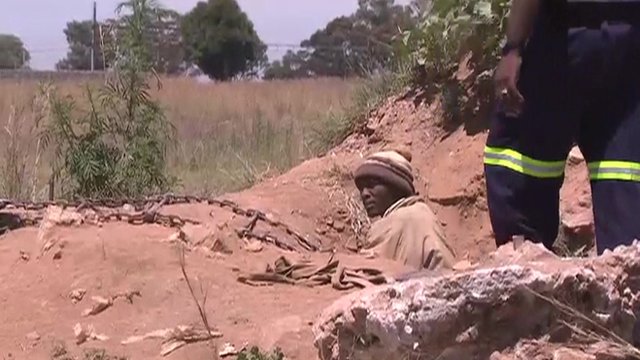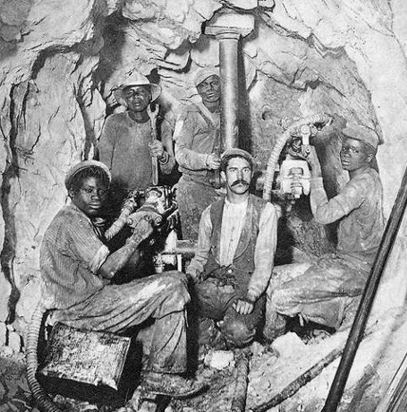South Africa’s latest mining saga – the trapping of several illegal miners working an abandoned shaft for gold – is a further indictment of the inept Jacob Zuma administration. A failure to improve the job prospects of thousands of Africans, or incorporate workers into the productive but mismanaged mining sector, has led to the proliferation of these zama zamas (hustlers).

The fact that many of the zama zamas are foreign nationals gives further proof of South Africa’s porous borders with immigration having run out of control in the past decade, exacerbating already dire social problems. That rival gangs are operating illegal gold mines without being stopped by the police is doubly embarrassing for the ANC, with the refusal of some of the trapped miners to leave the Benoni shaft for fear of arrest creating an atmosphere of farce.
The colonial administration that set in motion the South African mining industry in the second half of the 19th century was quick to exploit readily available African labour. Black Africans from within South African territories and further afield (particularly Lesotho) were incorporated into a pattern of migrant work that saw them employed for part of the year in carefully-managed mines before being sent back to their ‘homelands’ after their contract had run its course. Rotating the labour force prevented dissent and helped maintain high productivity levels.

An undoubtedly exploitative system – with the black workforce ordered to live in single-sex compounds and subjected to extremely low wages – it was an efficient enterprise for the colonial government.
With an unemployment rate hovering around the 25% mark, South Africa currently has an unexploited labour force. Whilst nobody could expect all of these people to be incorporated into the mining sector, the potential for labour expansion in this area has to be considered. A substantial proportion of South Africa’s mines are state-owned. The government should increase its investment in mining projects as a means of alleviating mass unemployment. If not, then the privatisation of mining land (which will admittedly not happen) would at least encourage further foreign investment which may in turn lead to job creation.
The economic efficiency of the Apartheid regime had its foundations in the exploitation of the black majority, an inherently racist system that served the purpose of the ruling elite. Only when the challenge to the principles of Apartheid grew strong enough were these economic foundations weakened.
That the post-Apartheid government has not been able to create a fairer and equally efficient African labour force (whilst allowing uncontrolled immigration) is one of the ANC’s biggest failings.
Instead of wasting money on needless infrastructural projects which offer no long-term job security, the South African government should re-invest its money and effort in the traditional segments of the economy, adapted to a post-Apartheid era. As the illegal mining operations prove, there is certainly no shortage of willing workers.

